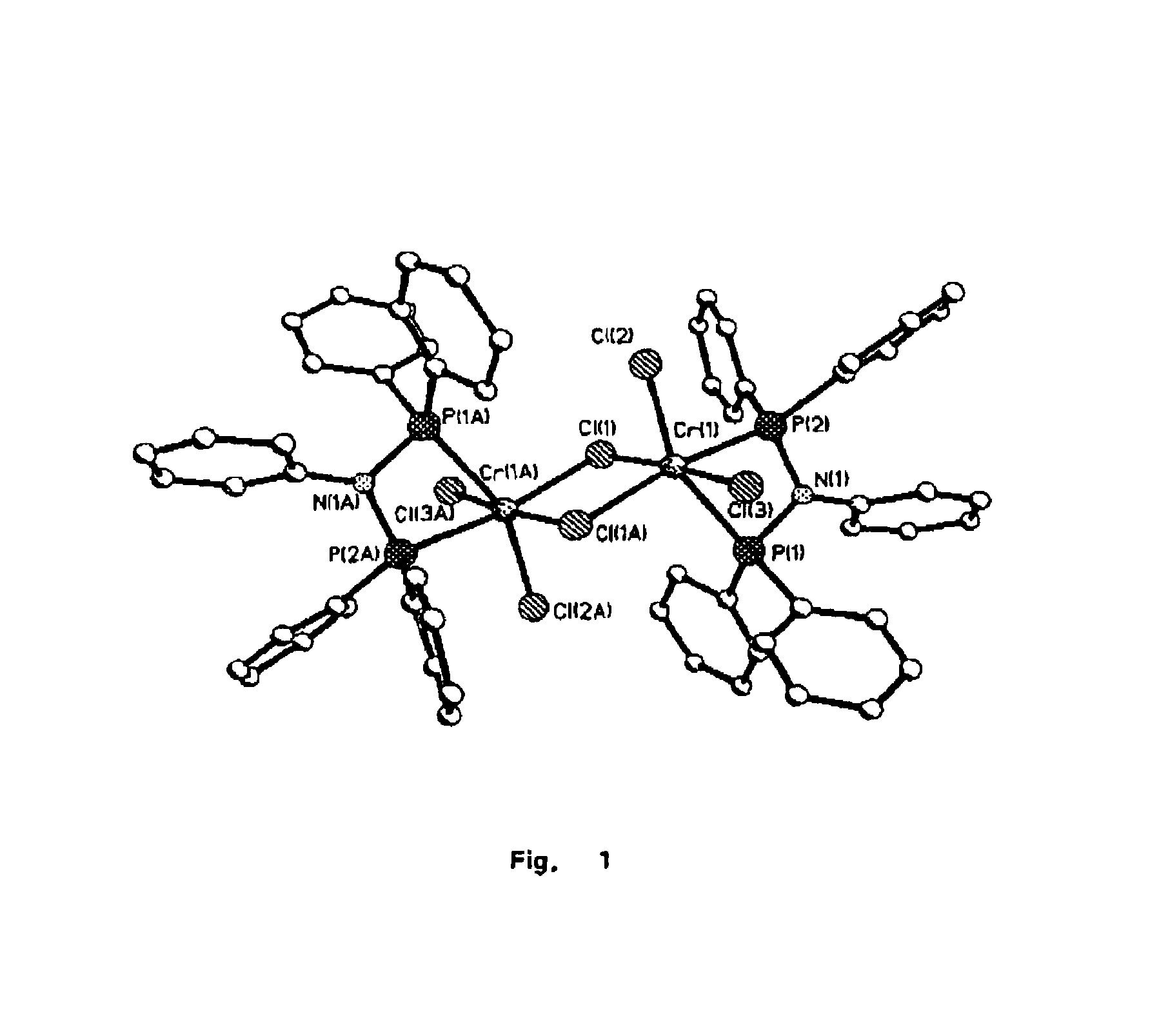Tetramerization of olefins
a technology of olefin and tetramerisation process, which is applied in the direction of organic compound/hydride/coordination complex catalyst, group 6/16 element organic compound, organic compound preparation, etc., can solve the problem of not teaching a commercially successful process for tetramerisation of ethylene to produce 1-octene selectively, and high 1-octene selectivity cannot be achieved, so as to improve catalyst performance and stabilize the catalyst system
- Summary
- Abstract
- Description
- Claims
- Application Information
AI Technical Summary
Benefits of technology
Problems solved by technology
Method used
Image
Examples
example 1
Preparation of the (phenyl)2PN(isopropyl)P(phenyl)2 ligand
example 1a
)
Preparation of N,N-diisopropylphosphoramide dichloride
[0095]Diisopropylamine (70 ml, 0.50 mol) in toluene (80 ml) was added to a solution of PCl3 (21.87 ml, 0.25 mol) in toluene (80 ml) at −10° C. The mixture was stirred for two hours and then allowed to warm to room temperature. The solution was stirred for a further hour after which it was filtered through a pad of celite. The product (35 g, 0.17 mol, 68%) was obtained after removal of the solvent. 31P {H} NMR: 170 ppm
example 1b
)
Preparation of phenyl-magnesium bromide
[0096]Magnesium turnings (9.11 g, 0.375 mol) were treated with 4-bromobenzene (7.90 ml, 75 mmol) in THF (100 ml). A vigorous reaction ensued which was cooled in an ice bath. Once the reaction had dissipated, the reaction mixture was heated under reflux for 2 hours yielding the Grignard reagent.
PUM
| Property | Measurement | Unit |
|---|---|---|
| pressure | aaaaa | aaaaa |
| temperatures | aaaaa | aaaaa |
| temperature | aaaaa | aaaaa |
Abstract
Description
Claims
Application Information
 Login to View More
Login to View More - R&D
- Intellectual Property
- Life Sciences
- Materials
- Tech Scout
- Unparalleled Data Quality
- Higher Quality Content
- 60% Fewer Hallucinations
Browse by: Latest US Patents, China's latest patents, Technical Efficacy Thesaurus, Application Domain, Technology Topic, Popular Technical Reports.
© 2025 PatSnap. All rights reserved.Legal|Privacy policy|Modern Slavery Act Transparency Statement|Sitemap|About US| Contact US: help@patsnap.com

